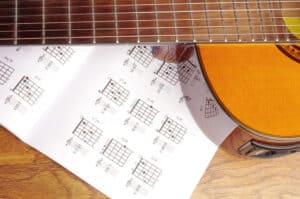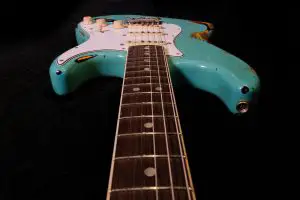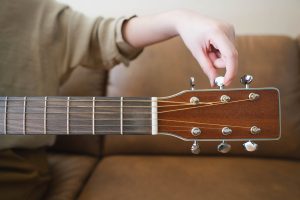Now we will continue with more scales/modes.
Mixolydian
Remember what I said about repeating shapes, this hexatonic scale is the exact same shape as ionian.
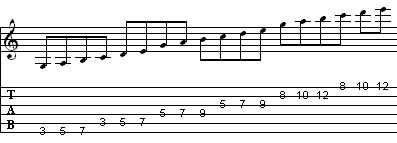
Aeolian
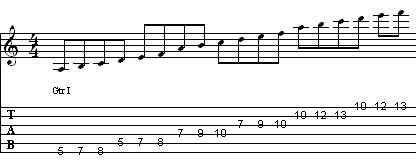
Locrian

You may have noticed the similarities and differences between these scales. Unless you memorized them by rote (which is much harder).
You should spend time noticing how when you change one note, the scale changes, too.
Here’s an example of what I’m talking about using ionian and lydian.
Notice how we sharp the fourth note in the shape by moving it up a fret, and we have an entirely new scale! (Satch and VAI are big fans of lydian, so this scale should sound familiar). The C lydian shape would be in the key of G major.
C Ionian
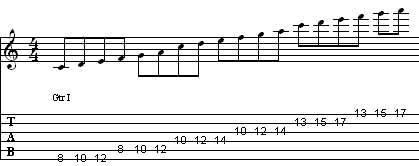
C Lydian
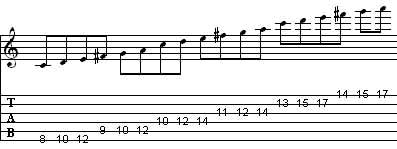
Hopefully, this column shed some light on your playing and gave you some insight.
To continue from this lesson I suggest learning the modes (at least of the major scale) three notes per string (this gives you a box shape to play each mode in position.
If you learn the modes of the major scale in three note per string forms in position (as illustrated in the first example of the lesson), then you will notice that the positions you are playing are simply a combination of the hexatonic shapes. So, by learning these shapes you are really learning two scales at once! How’s that for repeating patterns!
You should learn the modes and hexatonics in all 12 keys eventually, so try different keys! If you are more advanced, try applying this idea to other scales and harmonic systems, such as harmonic minor, etc.
Whether or not you realize it, when you play hexatonics and combine 2 or more of the different shapes you are actually playing the major scale or major scale modes. However, a lot of times it is just plain easier to look at the guitar in terms of shapes (hexatonics) than in terms of theory (modes).
Here’s a simple lick to give you a glimpse of what you can do with hexatonics. Try using different techniques such as alternate picking and legato:




